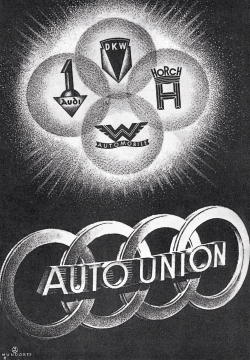
Automotive Intelligence - the web for automotive professionals and car enthusiasts
July 4, 2007
This Week:
-
Ford’s Edge awarded most appealing new vehicle by J.D. Powers
-
Jeep got them altogether in the annual Euro Camp Jeep event in France
-
Danish Prince Joachim enjoys the excitement of the Maserati Quattroporte
-
Kia’s Design Chief Peter Schreyer honored by Royal College of Art
-
June US car and light truck sales: Big Three loosing, Asian car makers gaining ground
-
Chery and Chrysler agreed to developed and market Chery cars under Chrysler's badge
-
PSA Peugeot CitroŽn to establish a Joint Venture project with Chinese Carmaker Hafei
-
Carlyle Group and Onex reached agreement to buy GM’s Allison Transmission
-
Honda Siel Cars India (HSCI) starts construction for its second Indian plant in Rajasthan
-
As part of Ford’s “Way Forward” the Norfolk assembly plant ends production
-
Audi puts emphasis on older employees, the “SilverLiners”, to produce the R8 in Neckarsulm
-
Tom Loveless to become Kia Motors America’s new Vice President of Sales
-
Ignacio Beamud named New Managing Director of Mazda Automoviles Espana
-
Mazda named Thomas Rothe Managing Director for Czech Republic and Slovakia
© 1998 - 2007
Copyright &
Disclaimer
Automotive Intelligence,
www.autointell.com
All Rights Reserved .
For questions please contact
editor@autointell.net
|
Audi is getting 75: Happy Birthday! 75 years ago the merger of the brands Audi, DKW, Horch and Wanderer took place and laid the basis for the future Audi Company. The four interlinked rings represented the symbol of the merger of Saxony's four car companies Audi, DKW, Horch and Wanderer that led to the formation of Auto Union AG.
exclusive cars and are a visible expression of brand identity and quality – while at the same time acting as a bridge between the past, present and future." The "75 years of the four rings" theme runs like a common thread through 2007 and Audi Tradition will be portraying it at various events. |
|
|
|
Audi Tradition will be participating in classic car meets and rallies such as the Concours d'Elegance de Bergerac, the Mille Miglia, the Donau Classic, the Sachsen Classic, the Chronoswiss Classic and the Gran Premio Nuvolari with various classic models of the four brands Audi, DKW, Horch and Wanderer. |
There will be special exhibitions in Zwickau, Chemnitz and Ingolstadt to mark the anniversary's theme:
-
Chemnitz Museum of Industry: "Four Rings for Saxony - 75 Years of Auto Union" from 9 June to 2 September 2007.
-
August Horch Museum, Zwickau: "75 Years of Auto Union AG – Races, Triumphs and Records" from 29 June to 4 November 2007.
-
Audi museum mobile in Ingolstadt: "Four Rings, One Marriage – A Brand Emblem Turns 75"; from 25 July to 31 October 2007, visitors can explore 75 years of company history.
History
The pressure on German car manufacturers had already been growing since the mid-1920s. Automation and assembly lines were the order of the day. American manufacturers were demonstrating the shape of things to come. Cars from the USA were flooding the European market. Those manufacturers that failed to rationalise or join forces with others were left behind. The Great Depression of 1929 put the four Saxony-based car companies under further pressure. The idea of a merger was first floated by the State Bank of Saxony. The companies finally merged on 29 June 1932 to become Auto Union AG. The companies entering into the alliance were Zschopauer Motorenwerke J.S. Rasmussen AG, which had already belonged to Audiwerke AG since August 1928, as well as Horchwerke AG and the Cars Division of Wanderer Werke in Chemnitz.
The company signet depicted four interlocking rings, intended to symbolise the inseparable unity of the four founder companies. The brand names Audi, DKW, Horch and Wanderer were retained. To avoid competition within the new group, each of the four brands was assigned a specific market segment: motorcycles and small cars for DKW, midsize cars for Wanderer, cars in the deluxe midsize segment for Audi, and luxury cars at the top end of the market for Horch.
A further benefit of the merger was that resources were pooled through the centralisation of administration, development, testing, sales and marketing operations at the company's headquarters in Chemnitz. Auto Union was consequently able to achieve pioneering status in the sphere of science and research: the Central Testing Institute (ZVA) and Central Development and Design Office (ZEKB) performed scientific development work and basic research. Even in those days, materials engineering, consumption research, acoustics measurements, wind tunnel tests and crash tests were common practice.
Photos: Audi
(June 28, 2007)
| .
Homepage News Companies Management Publications Events Guestbook Search . |
